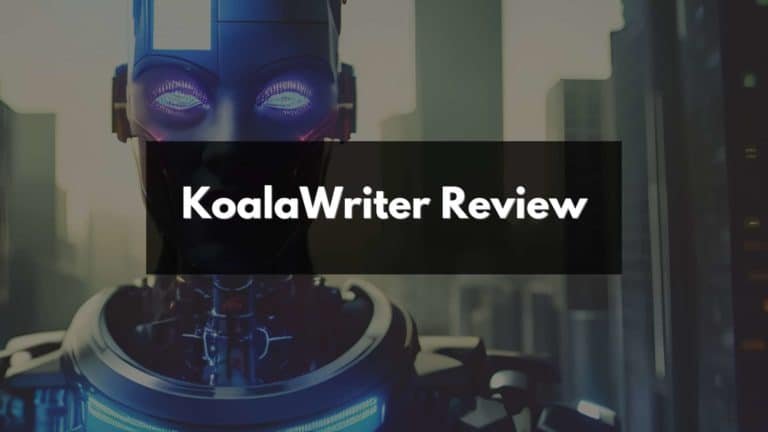Can SEO AI Pass Turnitin Detection?
Is your SEO AI content repeatedly flagged by Turnitin’s detection system? You’re not alone. With an impressive accuracy rate between 90% and 96%, Turnitin has advanced AI capabilities that detect and flag artificially generated content.
This blog post is a treasure trove of insights on how SEO AI can pass Turnitin Detection, exploring both the challenges and strategies involved. Ready to delve in? Let’s unravel this digital mystery!
Key Takeaways
- Turnitin’s AI detection system has an accuracy rate of 90% to 96%, making it challenging for SEO AI content to pass undetected.
- Turnitin uses various methods, such as machine learning, text similarity checks, and statistical pattern detection, to identify AI-generated content.
- Parameters considered in the detection process include language models, text similarity analysis, content analysis, plagiarism detection, and false positives.
- Strategies to avoid Turnitin AI detection include using undetectable AI tools, paraphrasing and revising content, understanding the assignment brief, and selecting unique topics.
How Turnitin AI Detection Works
Turnitin AI Detection works by using various methods to detect AI-generated content and considers parameters and flags in the detection process.
Methods used to detect AI-generated content
Turnitin uses a variety of techniques to identify AI-generated content.
- Utilization of machine learning: Turnitin’s system relies heavily on machine learning to classify texts based on specific patterns and inconsistencies that indicate artificial generation.
- GPT language models analysis: The platform has the ability to detect content generated by ChatGPT and similar language models.
- Text similarity checks: Turnitin conducts extensive text similarity analysis, comparing a submitted work with its vast database of academic papers, articles, and websites for any potential matches.
- Statistical patterns detection: This method involves scanning for statistical patterns that are often present in AI-generated text but not usually found in human writing.
- Consistency in tone and style: The AI detection checks if there are unusual shifts in tone or style throughout the text which could signify the use of an AI tool.
- Content authenticity measure: The system applies a content authenticity measure which provides insights into whether the work appears to be original or potentially manipulated.
Parameters and flags considered in the detection process
Turnitin’s AI detection considers several parameters and flags to identify AI-generated content. These factors help in analyzing the authenticity and originality of the written material. Some of the key parameters and flags considered in the detection process are:
- Language models: Turnitin’s AI detection algorithms compare the writing style, vocabulary, and sentence structure with known language models like GPT-3.
- Text similarity: The system examines the similarity of the text with existing online content, academic resources, and previously submitted papers.
- Content analysis: Turnitin’s AI detection analyzes elements such as word choice, syntax, coherence, and logical flow to determine if the content is humanlike or generated by AI.
- Machine learning algorithms: The system employs machine learning techniques to continuously improve its ability to detect AI-generated content based on patterns and characteristics unique to such writing.
- Plagiarism detection: In addition to identifying AI-generated content, Turnitin’s AI detection also checks for any plagiarism by comparing the text against a vast database of published works.
- False positives: To minimize false positives, Turnitin fine-tunes its algorithms by considering contextual factors and allowing for certain levels of variation in writing style.
- Evolving models: As AI technology evolves rapidly, Turnitin continuously updates its algorithms to keep up with new advancements in language generation models that may attempt to bypass detection.
Challenges in Passing Turnitin AI Detection
AI-generated content faces challenges in passing Turnitin AI detection due to false positives and evolving AI models that can bypass the detection process.
False positives in detecting AI-generated content
Turnitin’s AI detection capabilities have greatly improved over time, but there can still be instances of false positives when it comes to detecting AI-generated content. This means that sometimes legitimate human-written content might get flagged as AI-generated, which can be frustrating for writers.
Turnitin acknowledges this issue and continues to work on refining their algorithms to reduce the occurrence of false positives. It’s important for writers who are using AI tools or working with AI content writers to be aware of this possibility and take necessary precautions to ensure their authentic work is not mistakenly flagged by the system.
Evolving AI models that can bypass detection
New AI models are constantly evolving to find ways to bypass detection tools like Turnitin’s AI. These advanced models have the capability to mimic human writing, making it harder for detection platforms to identify them as AI-generated content.
As a result, writers looking for an AI content writer that can pass AI detection can now benefit from these evolving AI models, ensuring their work meets the required standards of authenticity and avoids being flagged by plagiarism detection systems.
Strategies to Avoid Turnitin AI Detection
Utilizing undetectable AI tools, rewriting and revising content, understanding the assignment brief, and selecting unique topics are effective strategies to avoid Turnitin AI detection.
Using undetectable AI tools
Undetectable AI tools can help writers ensure that their content passes AI detection. These tools are designed to generate humanlike writing that is difficult for algorithms to flag as AI-generated. By using these tools, writers can maintain the authenticity and originality of their content, while still taking advantage of the efficiency and assistance provided by AI. Additionally, these undetectable AI tools allow writers to confidently submit their work without worrying about being flagged for plagiarism or AI generation. They provide a valuable resource for writers looking for an AI content writer that can pass AI detection.
Paraphrasing and revising content
To pass Turnitin AI detection, writers can employ the following strategies:
- Paraphrase and reword the content to eliminate any similarities or matches with existing AI-generated texts.
- Revise the structure and style of the content to make it more unique and less likely to be flagged by AI detection algorithms.
- Incorporate extensive research and include original insights to enhance the authenticity and credibility of the writing.
- Ensure that the chosen topic is distinct and not commonly used, as this reduces the chances of being detected by AI plagiarism checkers.
- Utilize undetectable AI tools that can help generate human-like writing while bypassing Turnitin’s AI detection capabilities.
Understanding assignment brief and choosing unique topics
To avoid detection by Turnitin AI, it is essential to understand the assignment brief and choose unique topics. By thoroughly grasping the requirements of the task, you can craft content that is tailored specifically to those guidelines.
Additionally, opting for unique topics allows your writing to stand out from others, reducing the chances of being flagged as AI-generated content. Taking these steps promotes originality and authenticity in your work while ensuring it aligns with academic integrity standards.
Conclusion
In conclusion, passing Turnitin’s AI detection with SEO AI is a challenge due to the high accuracy rates and evolving capabilities of the detection platforms. However, writers can employ rewriting techniques and choose unique topics to increase their chances of avoiding detection.
Constant improvements in Turnitin’s AI detection mean that staying ahead requires careful consideration of ethical considerations and ongoing adaptation to new strategies.
FAQs
1. Can SEO AI pass Turnitin detection?
No, SEO AI cannot pass Turnitin detection as it is designed to detect plagiarism and similarities in content.
2. How does Turnitin detect if content has been generated by SEO AI?
Turnitin uses advanced algorithms and databases to compare submitted content with a vast amount of existing sources, including websites, journals, and other student papers. It can identify patterns or similarities that indicate the use of automated software like SEO AI.
3. Are there any alternative methods to detect if content has been generated by SEO AI?
Yes, apart from using plagiarism detection tools like Turnitin, experts can also analyze the writing style, structure, and consistency of the content to identify if it has been generated by an automated system like SEO AI.
4. Is it ethical or acceptable to use SEO AI for generating academic or original content?
Using SEO AI for generating academic or original content without proper attribution is considered unethical and a violation of academic integrity policies. It’s important to provide proper credit and avoid misleading readers about the source of the material.





